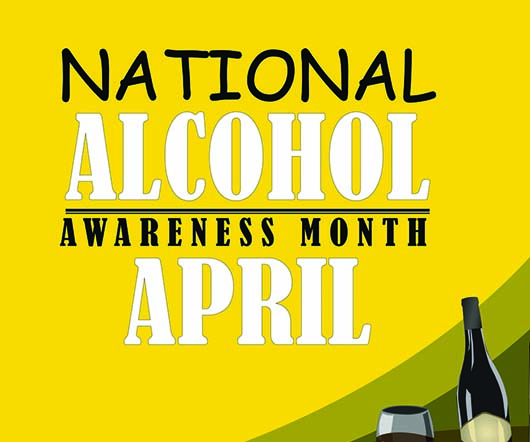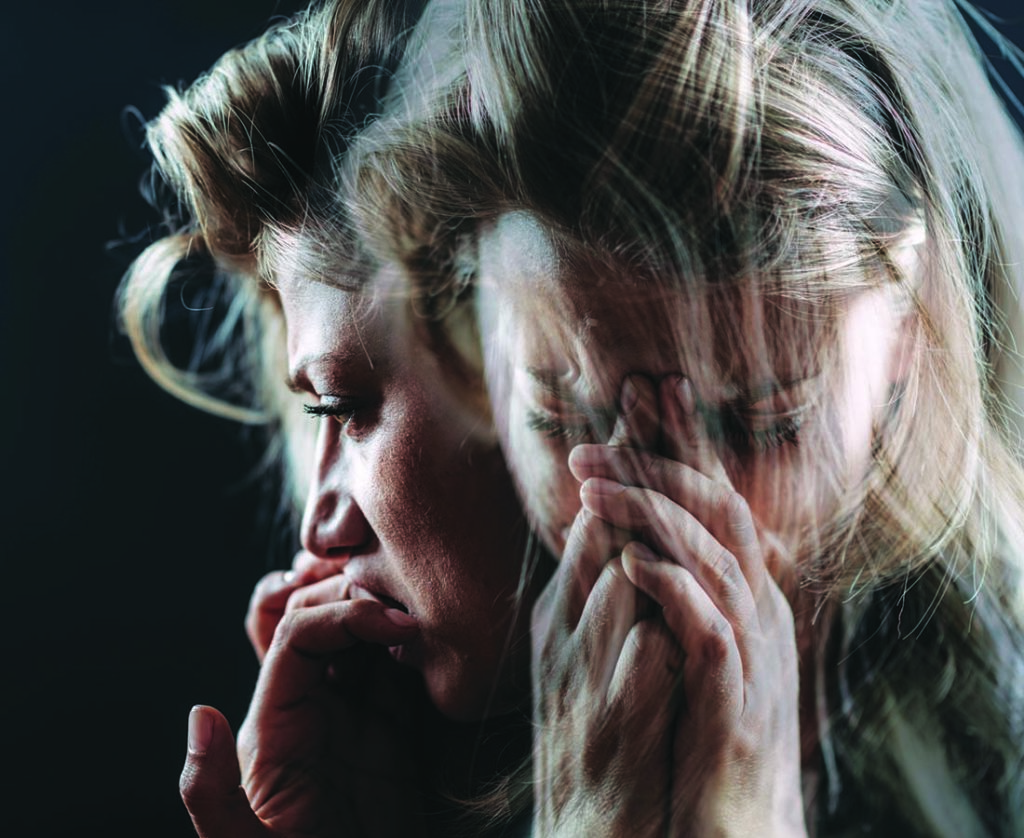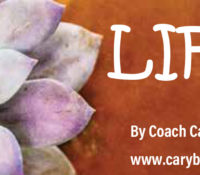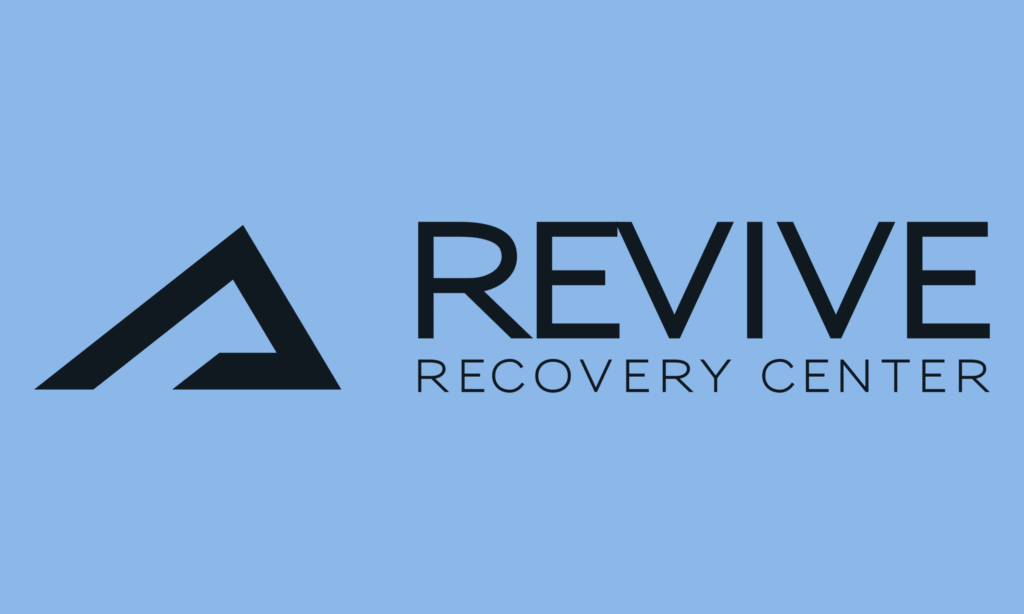By Dr. Tian Dayton, Senior Fellow at The Meadows “An important thing to understand if you’re an ACoA (Adult Child of an Alcoholic) is that the body as well as...
By Dr. Tian Dayton, Senior Fellow at The Meadows
“An important thing to understand if you’re an ACoA (Adult Child of an Alcoholic) is that the body as well as the mind are impacted by trauma. Children who grow up with parents who are chaotic, inconsistent or alcoholic can be affected in their nervous systems.
We used to think that if you left home in body, your mind left home, too. But we are much more psychologically savvy today. We know each of us carry the voices of those we grew up with in our heads and hearts. When those voices are soothing, we can call on them for consolation and confidence, when they are abusive, we defend ourselves from the admonitions of ghosts.
An important thing to understand if you’re an ACoA (Adult Child of an Alcoholic) is that the body as well as the mind are impacted by trauma. Children who grow up with parents who are chaotic, inconsistent or alcoholic can be affected in their nervous systems, because we’re so dependent on our parents when we’re children, for our very survival. Who they are and what they do in relationship with us, shapes who we become.
Neuroception, a term coined by Stephen Porges (2004), former Director of the Brain Body Center at the University of Illinois at Chicago, describes our innate ability to use intricate, meaning-laden, barely perceptible mind- body signals to establish bonds and communicate our needs and intentions. While many of these communications are conscious, still more occur beneath the level of our awareness.
Through our neuroception we can assess — in the blink of an eye, whether or not the situations we’re encountering are safe or in some way threatening. According to Porges, our neuroception tells us if we can relax and be ourselves, or if we need to self-protect. If the signals that we’re picking up from others are cold, dismissive, or threatening, our neuroception sets out an inner alarm, followed by a cascade of mind-body responses honed by eons of evolution to keep us from being harmed (Porges, 2004). In pain engendering exchanges, “people are not able to use their interactions to regulate their physiological states in relationship — they are not getting anything back from the other person that can help them remain calm and regulated. Quite the opposite. The other person’s behavior is making them go into a scared, braced-for-danger state. Their physiology is being up-regulated into a fight/ flight mode,” says Porges (personal communication, n.d.).
When a child’s attempts to connect or to give and receive love are ignored, rejected, or misunderstood, or their authentic emotions are cancelled out, that child will need to somehow defend against the pain of indifference and rejection. Or when a child is modeling a parent who is anxious or chaotic, they will have a hard time self-regulating or finding their own balanced regulation within this relationship.
ACA’s talk about a “place they go inside” when they get triggered, they often describe it as “being both activated and shut down at the same time, wanting to withdraw/dissociate and flee simultaneously.” A failure to successfully engage and create a sense of safety and nourishing connection with those people we depend upon to meet our most pressing, basic needs, can be experienced as traumatic. This type of relational trauma can occur at very subtle levels of engagement or a lack thereof, as well as in its more obvious forms of living with abuse, neglect, illness, or addiction.
Some of the factors that sear trauma in place and make it more likely a child of addiction (or family dysfunction) will develop PTSD are:
- Whether or not escape is possible, can the kids get away from stressful, painful family situations?
- Whether or not there is a power imbalance e.g. BIG parents… small kids.
- Did the child have access to outside support? Were there caring, concerned adults who could provide “safe haven” or a place the child could feel, if only momentarily out of harm’s way? A place that could provide a “reality check” or model a different way of being in a family?
The length of time the child spends in a numbed out, emotionally frozen or dissociated state. (The effects of trauma in the home tend to be cumulative, occurring incrementally and over a significant period of time.)
The developmental level of the child, how old were they when trauma in the home occurred, and what age-related capacities did they have to make sense of confusing, painful or frightening experiences?
Whether or not it’s the parents, who they would normally go to for comfort and reassurance who are causing the stress.
Years after the child has left home and become an adult, they may carry anxieties about themselves and relationships they do not fully understand. This is what the PTSD from being a child of addiction or dysfunction is all about. Days, months, years or decades after we leave our childhood living rooms, we find we recreate that similar emotional climate in our own homes.
The heat of intimacy acts as a trigger for the unconscious pain we carry. Even loud voices, a raised eyebrow, flashing eyes or a change in mood can send the ACA sailing back into a place inside where they feel anxious and threatened all over again. Because these children got hurt in relationships, it’s relationships later in life that tend to trigger them. But because of the psychological defenses they used as kids, they don’t make the connection. In other words, they don’t know that they don’t know, they really and sincerely think the source of their pain is outside of them, if only they could fix that person who is bothering them, they would feel fine.
I wrote The ACoA Trauma Syndrome in 2012 to make this connection that being an ACoA is having PTSD. At that time, I introduced a new laundry list not instead of, but in addition to Janet Woititz’s with the same publisher.
ACoA’s have suffered profound losses. There has been the loss of parents to rely on, the loss of family members to addiction and possibly death, the loss of a feeling of safety, the loss of the secure family unit, the loss of trust, the loss of a stable and smooth early development.
Tian Dayton’s List of ACoA and Adult Child Symptoms
Problems with Self-Regulation: Broad swings back and forth between feeling overwhelmed with intense emotion then shutting down or going numb, characterize the trauma response. We go from zero to 10, and 10 to zero, with no speed bumps in between bypassing four, five and six. We become uncomfortable living in the middle range and used to living on the edges. Twelve step programs have found a colloquial expression for this cycling, referring to it as “black and white” or “yo-yoing”.
Hyper Vigilance/Anxiety: When we’re hypervigilant, we tend to scan our environment and relationships for signs of potential danger or repeated relationship insults and ruptures. We constantly try to read the faces of those around us to protect ourselves against perceived danger. When we’re hypervigilant we’re constantly bracing for danger, “waiting for the other shoe to drop,” or “walking on eggs shells.” Unfortunately, this may also create problems because we may perceive danger even where little exists or become overly reactive to perceived slights, making ourselves hard to be around or even driving a situation toward problems. (van der Kolk 1985)
Hyper-reactivity/Easily Triggered: Living with relationship trauma can over sensitize us to stress. Consequently, we may over respond to stressful situations blowing conflicts that could be managed calmly out of proportion; we over react. People who are hyper reactive may become easily triggered. This hyper reactivity can emerge whether in a slow grocery line, in traffic, at work or in relationships. Stimuli reminiscent of relationship trauma, such as feeling helpless or humiliated can trigger old vulnerability; or being around yelling, criticism; even certain facial expressions may trigger a stronger reaction than is appropriate to the situation for the ACoA.
Emotional Constriction: Homes that do not encourage the expression of genuine feeling along with the emotional numbing… that part of the trauma response may mean those who have experienced relationship trauma have a restricted range of feelings that they are comfortable feeling and expressing. (van der Kolk 1985)
Loss of Trust and Faith: When our personal world and the relationships within it become very unpredictable or unreliable, we may experience a loss of trust and faith in both relationships and in life’s ability to repair and renew itself. This is why the restoration of hope is so important in recovery. It is also why having a spiritual belief system can be so helpful in personal healing. (van der Kolk 1985)
Unresolved Grief: ACoA’s have suffered profound losses. There has been the loss of parents to rely on, the loss of family members to addiction and possibly death, the loss of a feeling of safety, the loss of the secure family unit, the loss of trust, the loss of a stable and smooth early development. There are the losses of comfortable family events, rituals and holidays, and the loss of normalcy and the security of knowing that parents are in the position to parent and meet needs. ACoAs often need to mourn not only what happened, but what never got a chance to happen.
Traumatic Bonding: Traumatic bonds are unhealthy bonding styles that tend to become created in families where there is significant fear. Traumatic bonds have a tendency to repeat themselves, that is we tend to repeat this type of bond in relationships throughout our lives, often without our awareness. Trauma bonding is an emotional and psychological response to abuse in which the person being abused forms an unhealthy bond with the person who is abusing them. It occurs primarily when there is an abuse of power or authority. (Carnes 1991)
Learned Helplessness/Avoidance: When we feel we can do nothing to affect or change the situation we’re in, we may develop learned helplessness, we may give up and collapse on the inside. We may lose some of our ability to take actions to affect change or move a situation forward. We avoid people, places, things that threaten to trigger unresolved, past anxiety. (Seligman, Maier (1967), Dayton (2021), van der Kolk 1985)
Confusion: The cognitive dissonance that results from living with the ever changing realities surrounding addiction can cause children to doubt their own perceptions. Children sense one thing but are often told what they see and sense is not really happening. The denial and deception of the addict and often enablers bends their reality. As a result, children can become confused, they learn to doubt their own feelings and their best thinking. Eventually they may avoid coming to conclusions and decisions and this avoidance can grow into a defense that they slip into, a sort of zone that becomes a familiar hiding place.
Somatic Disturbances: Because the body processes and holds emotion, we may experience our unconscious emotions as somatic disturbances. Some examples of emotional pain affecting the body are back pain, chronic headaches, muscle tightness or stiffness, stomach problems, heart pounding, headaches, shivering and shaking. (van der Kolk 1985)
Tendency to Isolate: People who have felt traumatized may have a tendency to isolate and withdraw into themselves when they are feeling vulnerable. They have learned to recoil into a personless world and take refuge in avoiding connection. Isolation is also a feature of depression. Unfortunately the more we isolate the more out of practice become at making connections with people, which can further isolate us.
Cycles of Reenactment: The reenactment dynamic is one of the most common ways trauma from one generation gets passed down through subsequent generations. We tend to recreate those circumstances in our lives that feel unresolved, perhaps in an attempt to see the self more clearly and master or resolve our pain, or perhaps because we are locked in circuits of brain/body patterning that are largely unconscious. We repeat and repeat the relational patterns that are familiar even if they do not work to get us what we really want.
High Risk Behaviors: Adrenaline is highly addictive to the brain and may be a powerful mood enhancer and alterer. Speeding, sexual acting out, spending, fighting, drugging, working too hard or other behaviors done in a way that puts one at risk are some examples of high risk behaviors. (van der Kolk 1985)
Survival Guilt: The person who “gets out” of an unhealthy family system while others remain mired within it, may experience what is referred to as ‘survivor’s guilt. This is a term originally used to describe what soldiers who left mates on the battlefield experienced. This person may become overly preoccupied with fixing their families because the thought of being happy when their families remain locked in dysfunctional ways of living, can be very disturbing.
Shame: For the person growing up in an addicted environment, shame becomes not so much a feeling that is experienced in relation to an incident or situation, but rather a basic attitude toward and about the self. Both shame and guilt can be difficult to identify because they are so pervasive, a part of the very fabric of the personality. Shame, for example, can be experienced as a lack of energy for life, an inability to accept love and caring on a consistent basis, or a hesitancy to move into self-affirming roles. It may play out as impulsive decision making, or an inability to make decisions at all.
Aggression against Self and Others: “Being abused as a child sharply increases the risk for later delinquency and violent criminal behavior. In one study of 87 psychiatric outpatients (van der Kolk et al.,1991) we found that self-mutilators invariably had severe childhood histories of abuse and/ or neglect. There is good evidence that selfmutilative behavior is related to endogenous opioid changes in the CNS secondary to early traumatization.”
Development of Rigid Psychological Defenses: People who are consistently being wounded emotionally and are not able to address it openly and honestly may develop rigid psychological defenses to manage their fear and pain. Dissociation, denial, splitting, repression, minimization, intellectualization, projection are some examples of these defenses.
Relationship Issues: Those who have experienced trauma within the context of primary relationships may tend to recreate dysfunctional patterns of relating in the present that mirror unresolved issues from the past. This can occur through psychological dynamics such as projection (projecting our pain onto someone or a situation outside the self), transference (transferring old pain into new relationships), reenactment patterns (recreating dysfunctional patterns of relating over and over and over again).
Depression with Feelings of Despair: The limbic system regulates mood. When we are dysregulated in our emotional system through living with the pain and chaos that often surrounds addiction, we may have trouble regulating feelings such as anger, sadness and fear, all of which may contribute to depression. Research both in animals and in people show stress or trauma early in life can sensitize neurons and receptors throughout the central nervous system so that they perpetually over-respond to stress. (van der Kolk) This disregulation can also morph into having trouble regulating substances and behaviors, in other words it can lead to compulsive self-medication.
Distorted Reasoning: We make sense of situations with the developmental equipment we have at any given age. When we’re young we make childlike meaning which may be laced with magical thinking or interpretations based on the natural egocentricity of the child who feels that the world circulates around and because of them. This kind of reasoning can be immature and distorted. When our family unit is spinning out of control, we may tell ourselves whatever is necessary to allow ourselves to stay connected. We may tell ourselves that our drunk mother has the flu or that our sexually invasive father loves us best. We may deny the truth that is right in front of us in an attempt to make a more palatable meaning out of confusing, frightening or painful experiences that feel senseless. We may carry this distorted reasoning into adult relationships.
False Self Functioning: We create a “false self” that is more acceptable to others rather than being your authentic self, a presentation that we imagine will work better in our family system but does not allow us to be our authentic self. The concept of false self came from D. W. Winnecott who used the term “true or real self to describe a sense of self based on spontaneous authentic experience, and a feeling of being alive”. He saw the false self as a “defensive façade, lacking spontaneity and feeling dead and empty, behind a mere appearance of being real.”
Learning Difficulties: The ability to attend in the present can be negatively impacted by trauma. Physiological hyperarousal interferes with the capacity to concentrate and to attend in the present and to make sense of, draw meaning from and learn from experience or teaching. (van der Kolk, van der Hart, Burbridge)
Body/Somatic Disturbances/Sleep Problems: Our body sometimes does our feeling for us if we can’t feel and heal it consciously. Emotion gets stored in a sensitive body part, we get tight muscles, back problems, queasiness, chronic headaches and so on. Or we may experience sleep problems, such as nightmares, or flashbacks that intrude on our relaxation. (van der Kolk 1985)
Loss of Ability to Take in Caring and Support from Others: The numbing response and mental preoccupation along with the emotional constriction that is part of the trauma response may lead to a loss of ability to take in caring and support from others. As mistrust takes hold, our willingness to accept love and support may lessen. We’re perhaps afraid if we let our guard down, if we let connection feel too good, we’ll only set ourselves up for more pain when the inevitable happens and we’re disappointed again and again. So we protect ourselves as best as we know how imagining that by avoiding meaningful connection we will also avoid hurt. (van der Kolk 1985)
Desire to Self-Medicate: The emotional, psychological and physiological set up that accompanies relationship trauma, can lead to self-medication; in which we seek a chemical solution for human problems. It can take the form of a dysregulated relationship with alcohol, drugs, food, sex, money, work, the internet to name a few. Self-medicating can seem to be a solution in the immediate moment, as it really does make pain, anxiety and physiological disturbances temporarily disappear, but in the long run, it creates many more problems than it solves. All too often the ACoA becomes an addict. Part of getting and staying sober for this person will be facing the pain and trauma they carry from growing up with addiction that might trigger relapse. (van der Kolk 1985)
As you see, a desire to self-medicate is a common manifestation of PTSD and this is, in my opinion, how addiction passes seamlessly through the generations.
Braced for Danger in Our Intimate Relationships
Children who grow up with parents who are chaotic, inconsistent or alcoholic can be affected in their nervous systems.
When I use the word trauma throughout this book, I am talking about places where development was impacted because we went into a freeze or dissociated state. I am not only looking for significant events in one’s life, but also for circumstances and relational dynamics that made us anxious, uncomfortable or frightened enough that our protective, “braced for danger” psycho-emotional and physiological apparatus kicked in. And that as a result of that we’re not able to be fully present and settle comfortably in our own skin while in relationship with another. Some trauma response that went on inside of us has kept and still keeps us from being able to attend and be present, to be comfortable in our own skin.

Dr. Tian Dayton is a senior fellow at The Meadows and author of fifteen books including, The Adult Children of Alcoholics Workbook,The Soulful Journey of Recovery, The ACoA Trauma Syndrome:, Emotional Sobriety and Forgiving and Moving On she is a Huffington Post blogger.
Dr, Dayton was on the faculty at NYU for eight years teaching psychodrama. Dr. Dayton is a fellow of the American Society of Psychodrama, Sociometry and Group Psychotherapy ASGPP, winner of the Lifetime Achievement award, their scholar’s award, the President’s award and editor in chief of the Journal of Psychodrama, Sociometry and Group Psychotherapy and sits on the professional standards committee. She is also the winner of The Mona Mansell Award and The Ackermann Black Award. Dr. Dayton has been a guest expert on NBC, CNN, MSNBC, Montel, Rikki Lake, John Walsh, Geraldo. For further information log onto tiandayton.com
About the ACoA Workbook
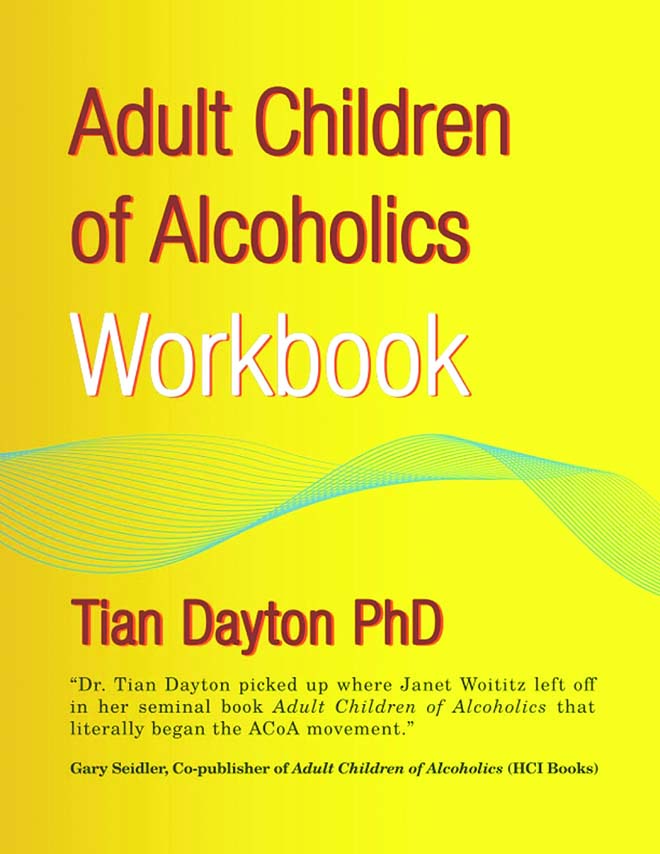
“It has long been a desire of mine to create a workbook for Adult Children of Alcoholics…..as an ACoA myself….I know that it takes a village and a lifetime to figure out the strange legacy of loving someone who moves in and out of reality….and takes the family with them to varying degrees. This workbook is about climbing out of that legacy. It’s about understanding both the cost and the rather unusual and sometimes zany gifts of living in a world that challenges one’s sense of “normal”. Anyone who has grown up with adverse childhood experiences, codependency or relational trauma can find themselves in the pages of this book. This information and the exercises and processes here, are for you. I had a wonderful time putting this together, I tried to make it as welcoming and user-friendly as possible. I hope that you’ll have an equally good time using it…”come on in, the water’s fine….” (Available on Amazon.com)
Looking for a meeting? Visit https://aca-arizona.org/


